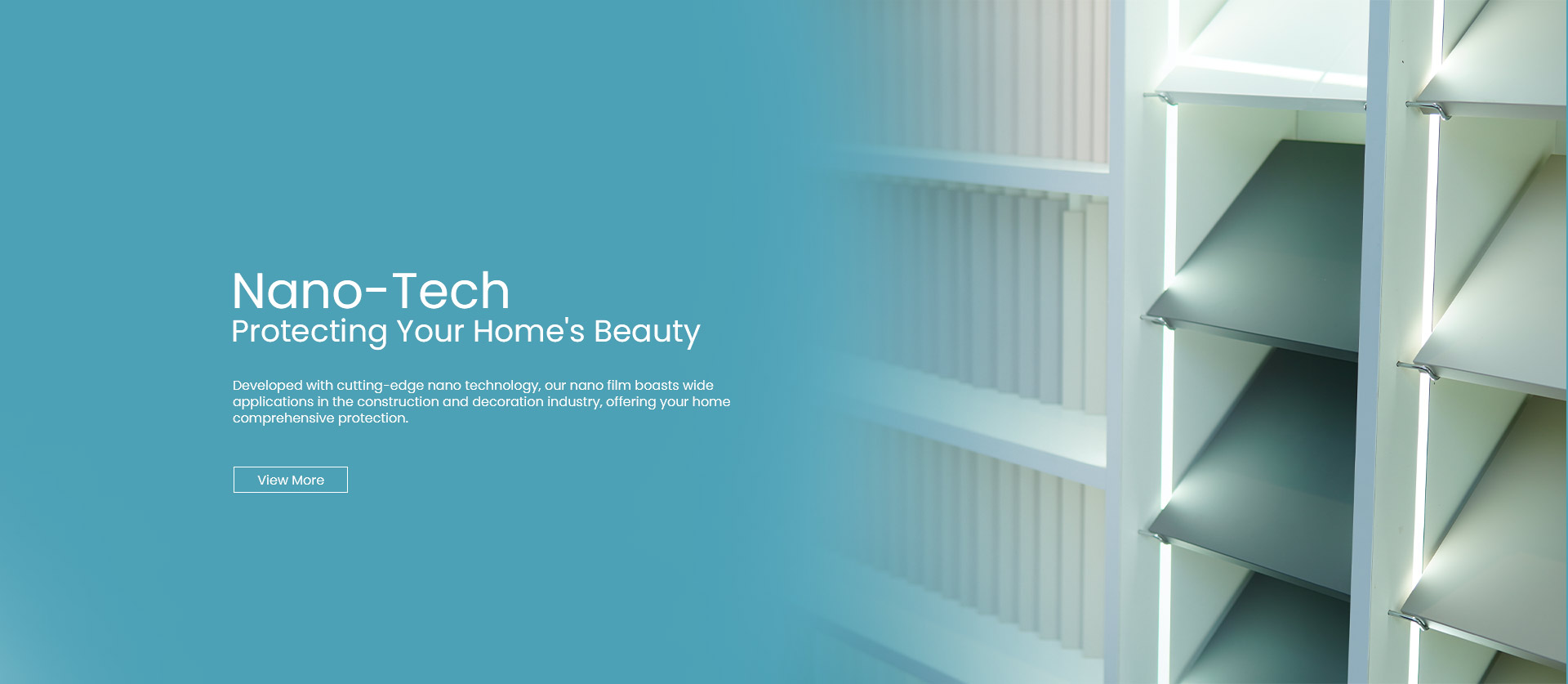Versatile Applications of Nanofilm in Surface Decoration Across Diverse Building Materials
nanofilm, a cutting-edge technology in surface decoration, has emerged as a versatile solution for enhancing the aesthetic appeal and functionality of various building materials. This article explores the extensive applications of nanofilm, focusing on its role in decorating surfaces of wood-based substrates, calcium silicate boards, carbon crystal boards, glass panels, Andi boards, aluminum honeycomb panels, metals, aluminum profiles, and other architectural materials. Its widespread use spans across industries such as residential furniture, office furniture, hotel furniture, hospital furniture, banking furniture, specialty stores in commercial spaces, wall panels, doors, ceilings, interior wall decorations, elevator cabins, and more.
1. Wood-Based Substrates:
nanofilm finds extensive application in decorating surfaces of wood-based substrates, including plywood, particleboard, and MDF. Its ability to replicate realistic wood grain patterns enhances the visual appeal of furniture and interior elements, providing a cost-effective alternative to natural wood finishes.
2. Calcium Silicate Boards:
In the construction industry, Nanofilm is applied to calcium silicate boards to introduce various aesthetic styles and finishes. Whether mimicking natural textures or offering sleek modern designs, Nanofilm enhances the versatility of calcium silicate boards, making them suitable for a wide range of architectural applications.
3. Carbon Crystal Boards:
The integration of Nanofilm with carbon crystal boards results in surfaces that exhibit both style and durability. This combination is particularly advantageous in creating modern and energy-efficient heating solutions for interior spaces while maintaining an attractive appearance.
4. Glass Panels:
Nanofilm transforms plain glass panels into dynamic and visually engaging surfaces. From providing privacy solutions to adding decorative elements, Nanofilm offers an array of possibilities for interior and exterior glass applications, contributing to a sophisticated and contemporary architectural aesthetic.
5. Andi Boards:
Andi boards, a popular material in the furniture industry, benefit from Nanofilm applications by receiving customized designs and finishes. The versatility of Nanofilm allows for creative expression, enabling manufacturers to produce furniture with diverse styles and textures.
6. Aluminum Honeycomb Panels and Metals:
Nanofilm brings a touch of sophistication to aluminum honeycomb panels and various metal surfaces. Its anti-scratch, wear-resistant properties make it an ideal choice for elevating the aesthetics of exterior cladding, commercial spaces, and architectural elements that require durability and visual appeal.
7. Aluminum Profiles:
Nanofilm's adaptability extends to aluminum profiles, enabling the creation of sleek and modern designs. Whether applied to window frames, door frames, or other aluminum elements, Nanofilm enhances the overall appearance and longevity of these architectural components.
8. Wide Industry Applications:
The applications of Nanofilm span across numerous industries, including residential and office furniture, hotel and hospital furnishings, banking interiors, and specialty stores in commercial spaces. Its ability to adapt to different substrates and materials makes Nanofilm a preferred choice for achieving a cohesive and stylish look in diverse settings.
Nanofilm has become a transformative force in the world of surface decoration, offering limitless possibilities for architects, designers, and manufacturers. Its applications across a spectrum of building materials demonstrate its versatility and ability to elevate the visual and functional aspects of various architectural elements. As the demand for innovative and sustainable design solutions continues to grow, Nanofilm stands out as a key player in shaping the future of surface decoration in the construction and interior design industries.


